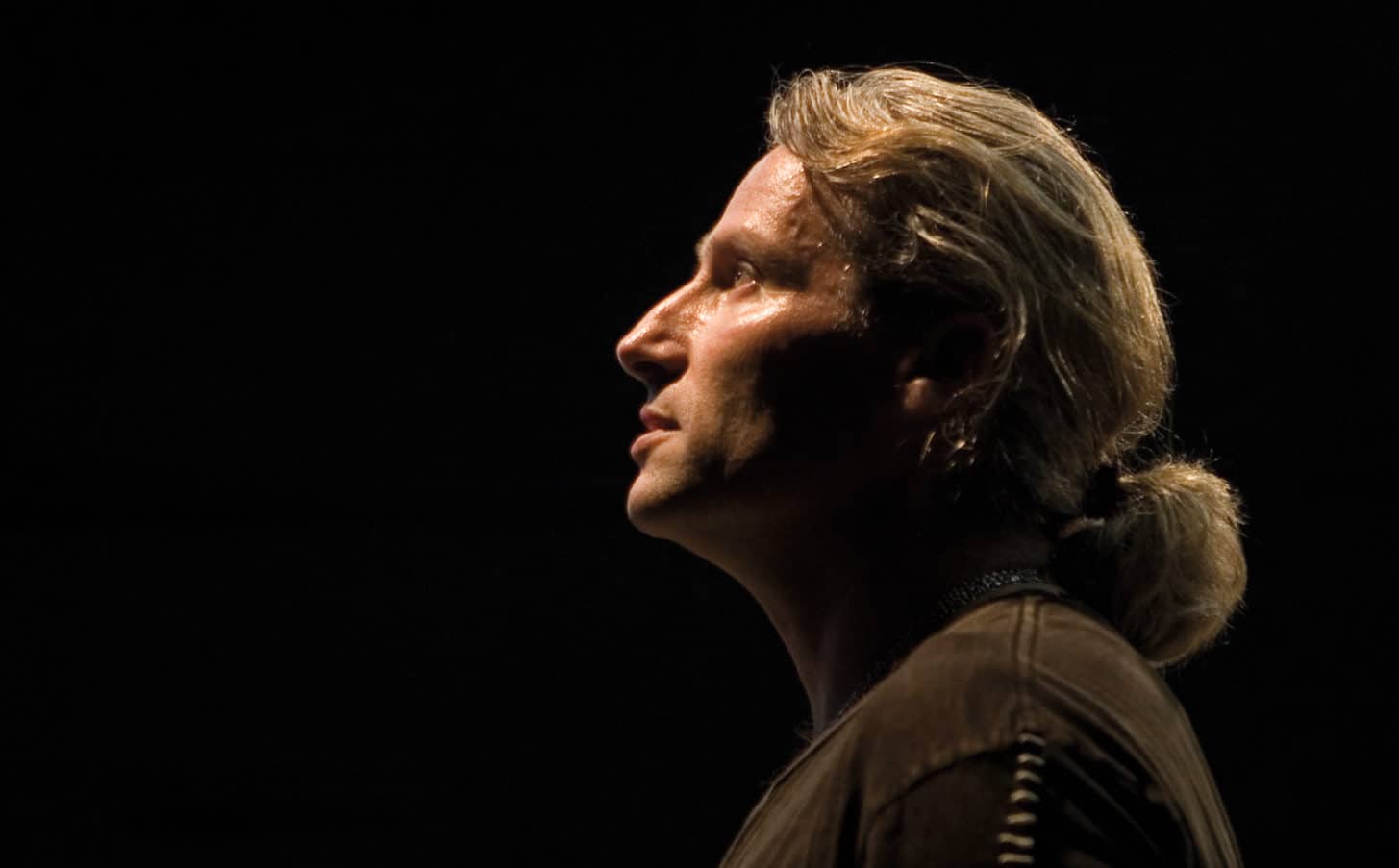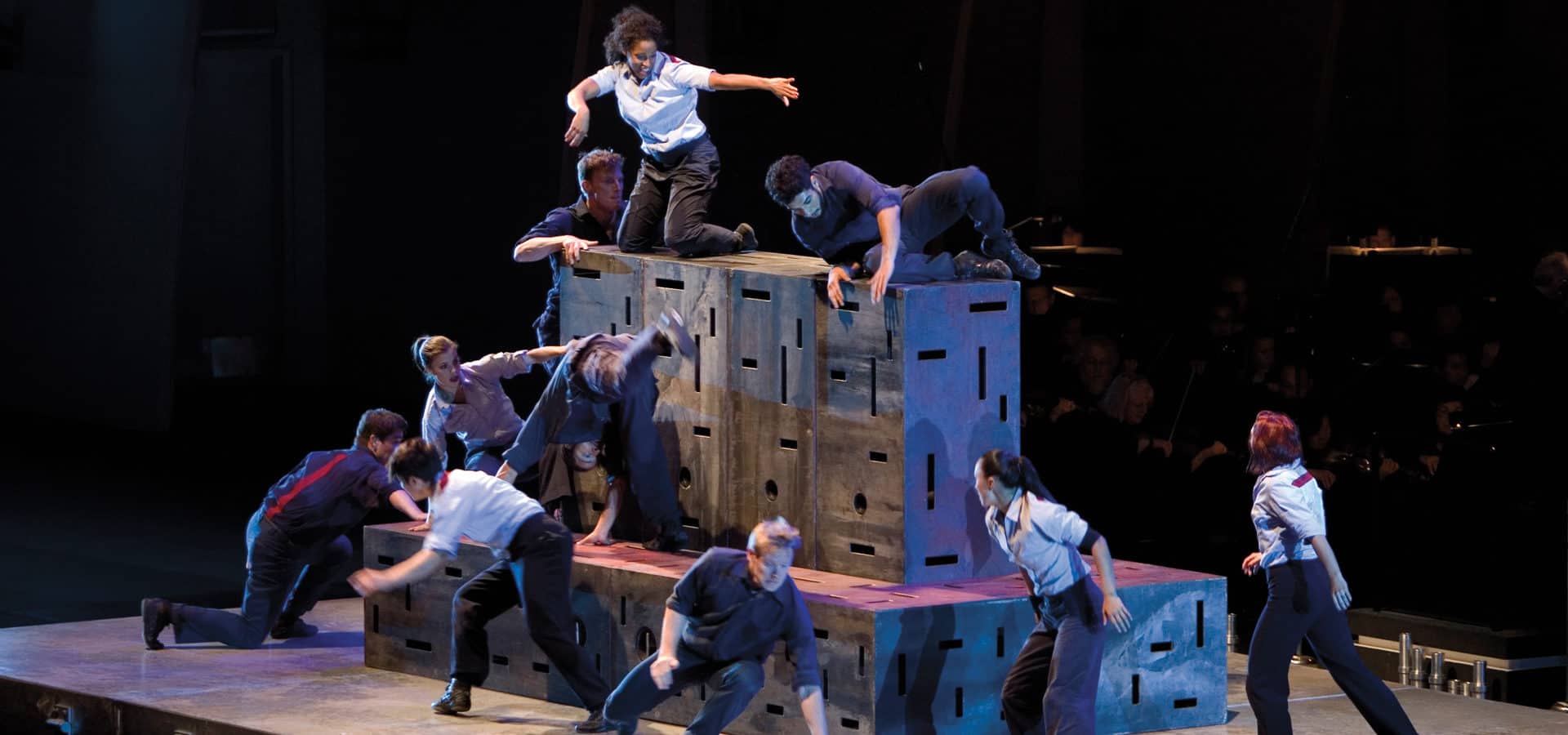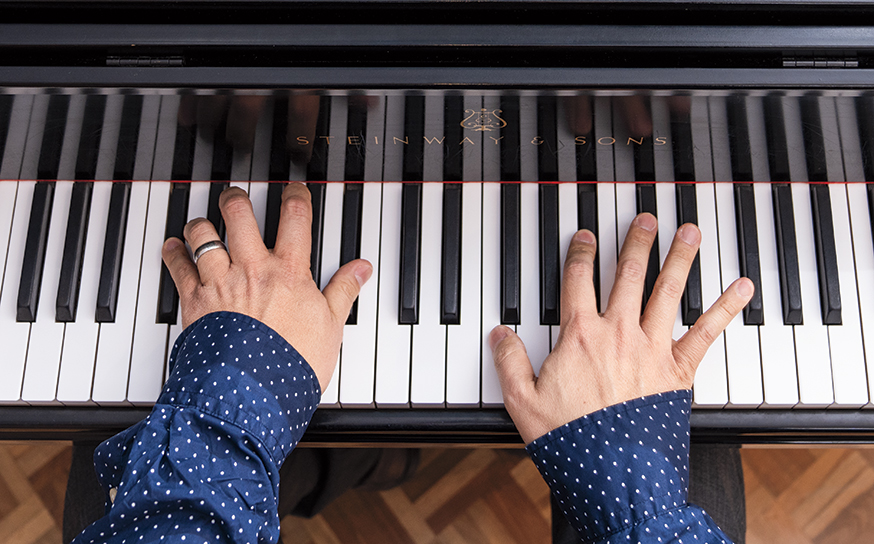Through his dance company Diavolo, choreographer Jacques Heim delights audiences all over the world.
Can you say daring?
-
CategoryPeople
-
Written and Photographed byRose Eichenbaum
When 19-year-old Jacques Heim moved to the U.S. from France in 1983, he was on a quest for something that would give his life meaning. With a love of theater and dance and a passion for architecture, he seemed destined for a life in the arts.
“Before every Diavolo performance, we come together in a circle and say out loud to each other, ‘I will die for you.’ If they’re not willing to die for one another, then they don’t belong in Diavolo.”
Jacques spent the next nine years researching and developing what was to become his raison d’etre and ultimately his life’s work—his theatrical dance company Diavolo—Architecture in Motion.

Jacques Heim
From day one Jacques eschewed dance conventions. He choreographed his first performance piece, Tete en Lair in 1992 with the help of performers drawn not just from dance but gymnastics—and a gigantic wooden staircase. It premiered at Barnsdall Gallery Theatre in Hollywood. And the rest, as they say, is history. Twenty-five years later, Diavolo is one of the country’s most innovative and successful dance companies. It’s toured extensively throughout the United States and around the globe to sold-out houses.
What makes this LA-based company so popular is that it takes audiences on a virtual roller coaster ride. They may not always understand the subtext behind each performance, but they’re drawn in by the visual aesthetics and mesmerizing production values. With highly rigorous choreography, there’s also an inherent element of danger.
While his theatrical pieces are abstract in nature, Jacques says they are inspired by his observation of how we live and the challenges of life. “I don’t spend a lot of time in a studio looking in the mirror trying to come up with movement,” he says. “What I do is conduct research. I work with my dancers to investigate how we as humans relate and interact physically, socially and emotionally with our man-made environment. I explore themes of human struggle, chaos, order, fear, survival, destruction, reconstruction, faith, love and destiny in a modern world. I’m interested in the analysis of us and the human spirit.”

In addition to being well-trained, dancers must have a resilient attitude and be willing to take extreme physical risks, like jumping from high places, balancing vicariously atop moving structures and diving off tall platforms with precision timing, into the waiting arms of their fellow performers.
“Because I put my dancers in a state of danger, they must work collaboratively, be responsible and trust each other,” he says. “Before every Diavolo performance, we come together in a circle and say out loud to each other, ‘I will die for you.’ If they’re not willing to die for one another, then they don’t belong in Diavolo.”
In 2005 Jacques was invited by the producers of Cirque du Soleil to choreograph KA for the MGM Grand Hotel in Las Vegas. Considered a masterpiece of storytelling and special effects, it has been seen by more than 1 million spectators and continues to generate huge ticket sales.
In 2017 he took on another big challenge when Diavolo appeared on America’s Got Talent and advanced to the finals. Although it did not win the competition, the company got worldwide exposure. Approximately 12 million television viewers typically see the show.
Crossing over from the art world into commercial entertainment was somewhat enlightening for the choreographer. Jacques, who lives in Encino with his wife, delights in the fact that he was able to reach a broad audience with art that has meaning and purpose.
“Everyone is interested in themes and ideas that affect all of humanity—how we live and what’s important to us.”
Join the Valley Community









